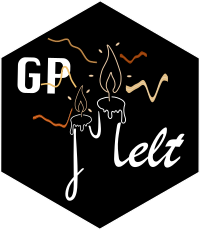An overview of the tutorial
1 Installation
We start the tutorial by installing everything required here.
2 The example of the ATP 2019
Next, we explain step by step how to run the pipeline on a real dataset, the ATP 2019 dataset (Sridharan et al. 2019), from loading the data (here) to running the unique Nextflow command line from the terminal (here).
3 Nextflow pipeline
We schematically describe what is happening in this workflow here
4 GPMelt outputs
After this, we explore the different outputs of the GPMelt pipeline, and describe how they can be used, from the most important outputs to the Nextflow reports.
5 Additional examples
We finish by providing the parameters.txt files that can be used to test the other real datasets presented in GPMelt (Le Sueur, Rattray, and Savitski 2024).
References
Le Sueur, Cecile, Magnus Rattray, and Mikhail Savitski. 2024. “GPMelt: A Hierarchical Gaussian Process Framework to Explore the Dark Meltome of Thermal Proteome Profiling Experiments.” PLOS Computational Biology 20 (9): e1011632.
Sridharan, Sindhuja, Nils Kurzawa, Thilo Werner, Ina Günthner, Dominic Helm, Wolfgang Huber, Marcus Bantscheff, and Mikhail M Savitski. 2019. “Proteome-Wide Solubility and Thermal Stability Profiling Reveals Distinct Regulatory Roles for ATP.” Nature Communications 10 (1): 1155.
